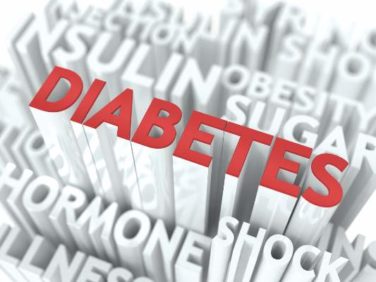FROM BMJ OPEN DIABETES RESEARCH & CARE
Individuals with type 1 diabetes are at significantly higher risk of bacterial infections compared with nondiabetic controls, according to a prospective cohort study .
Finnish researchers found the rate of hospitalization for bacterial infections was 2.3 times higher in patients with diabetes compared with nondiabetic controls (relative risk, 2.3; 95% confidence interval, 2.11-2.51), and nearly 7 times higher in patients who had received a kidney transplant (RR, 11.2; 95% CI 8.1-15.5) compared with those with diabetes and normal urinary albumin excretion rate (AER).
Data from 4,748 patients enrolled in the Finnish Diabetic Nephropathy (FinnDiane) Study, and 12,954 matched nondiabetic controls, showed the rate of hospitalization was linked with the severity of diabetic nephropathy, ranging from a 23% increase in risk with microalbuminuria to an 11-fold increase in risk for dialysis patients, compared to a normal AER.
“Even in patients with normal AER, each unit increase in hemoglobin A1c increased hospitalizations by 26%,” wrote Dr. Johan R Simonsen of the Folkhälsan Institute of Genetics, Helsinki, Finland, and coauthors. The study was published online March 5 in BMJ Open Diabetes Research & Care (doi:10.1136/bmjdrc-2014-000067).
Individuals with type 1 diabetes also purchased significantly greater numbers of antibiotics than did nondiabetic controls, and each unit of increase in glycated hemoglobin was associated with a 6%-10% increase in annual antibiotic purchases.
Annual antibiotic purchases were 1.18-fold more frequent in patients with microalbuminuria, 1.29-fold with macroalbuminuria, 2.43-fold with dialysis, and 2.74-fold with kidney transplant, compared with patients who had normal AER, according to the investigators.
Patients with normal urinary AER had a 48% greater rate of antibiotic purchase than that of healthy controls, even after the researchers controlled for comorbidities.
Researchers also examined whether frequent antibiotic use was associated with the progression of nephropathy. They found that the mean number of antibiotic purchases was higher among patients who developed microalbuminuria compared with diabetic patients with normal urinary AER.
“In patients with incident microalbuminuria, the number of antibiotic purchases was higher at the time of nephropathy diagnosis (year 0) compared with 4 years before the progression (year −4; P = .04 for time effect),” they wrote, finding no differences in antibiotic purchases in patients with normal urinary AER during follow-up.
The impact of comorbidities on hospitalization and antibiotic prescribing varied with the type of comorbidity; hypertension significantly increased the rate of hospitalization in patients with diabetes compared with those without, while cancer was associated with much higher hospitalization rates in those without diabetes.
Antibiotic purchases were significantly higher in patients with diabetes and atherosclerosis compared with those without diabetes, but lower in diabetic patients with respiratory diseases such as COPD compared to nondiabetic patients with the same conditions.
The rate of hospitalization for infection was similar in men and women with diabetes, whereas women with diabetes purchased significantly more antibiotics than did men.
While hyperglycemia is known to cause immunosuppression, and therefore to increase susceptibility to bacterial infection, infections themselves may also cause hyperglycemia, the authors suggested.
“Hence, a vicious cycle may arise as frequent infections can worsen the glycemic control in patients with diabetes, and conversely, chronic hyperglycemia may facilitate the development of infections,” they wrote.
“As chronic hyperglycemia remains the primary cause of metabolic, biochemical, and vascular abnormalities in diabetic nephropathy, it could be argued that poor glycemic control may be the link between the progression of diabetic nephropathy and the higher incidence of bacterial infections.”
The Folkhälsan Research Foundation, the Wilhelm and Else Stockmann Foundation, the Livoch Hälsa Foundation, the Päivikki and Sakari Sohlberg Foundation, the Academy of Finland, the Diabetes Research Foundation, and the Novo Nordisk Foundation supported the study. One author disclosed ties to several pharmaceutical companies, including Novo Nordisk. There were no other conflicts of interest declared.



